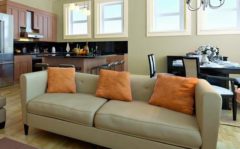Assistive Listening Devices
Assistive listening devices (ALD) are utilized for improving hearing ability for people in varied situations where they’re unable to differentiate speech in noise. Usually in a crowded or noisy room it’s virtually not possible for a person whose hearing is impaired to differentiate one voice among several. The listener whose hearing is impaired has to differentiate between noise between them, background noise, and the speaker. There will also be an impact of room acoustics on the sound quality reaching their ears. Hearing aids can enhance and process these sounds and the speech to noise ratio will be improved but if there is lot of distortion in sound by the time the listener hears it, even the best hearing aids can strive to unscramble the signal.
Benefits of Assistive Listening Devices
It’s commonly used to help people who are hard of hearing (HOH) by better sound to noise ratio (SNR) and amplification. The usage of ALD is to help HOH people hear televisions and other audio devices. It also helps people to hear speech using public address (PA) systems like in a lecture or synagogue. There is an estimation that people with loss of hearing need an increase in volume of around 15 to 25 decibels for understanding speech and other sounds as easily as those with normal hearing. This gap in hearing loss in people can be made up by using ALDs. It increases sound to a comfortable level for them.
Types of Assistive Listening Devices
There are three main types of assisting listening devices, which are all considered very helpful for people afflicted from loss of hearing. Usually ALDs use infrared, FM, or inductive loop technology for amplifying and filtering sounds for their users.
Personal modulation (FM) Systems –
These systems use radio broadcast technology and act very much like miniature, customized radio stations. The private FM system consists of a mike utilized by the speaker (a pastor, academic, or leader, for example and a receiver utilized by the listener. Personal FM systems aren’t offered off-the-shelf and should be distributed by professional audiologist.
Infrared Systems – Infrared light waves are used by these systems for transmitting sound information from a movie theater, television set, or as with personal FM systems.
Induction Loop Systems – Electromagnetic technology is used by these systems and can be usually seen in group settings in which they are used by many hearing impaired persons. Using receiver and headphones individuals may use an inductive loop device.
One-on-One Personal Amplifiers – These systems are used to help their wearers in small group conversations and face-to-face. They are suitable for use in nursing homes, restaurants, at home, or in school settings. The need for shouting is eliminated by these systems and helps in maintaining the privacy of both the speaker and the listener.
Today there are many Assistive listening devices available in the market for persons whose hearing is impaired and for situations where one has to communicate with others at close range but needing privacy like in restaurants.
Interior game offers free consultation on interior designing and decoration, soundproofing products and materials from USA. Living room interiors and bedroom interiors, bathroom interiors and kitchen interiors, Garden exteriors and wall painting, wall paper Fixing and guidance.
